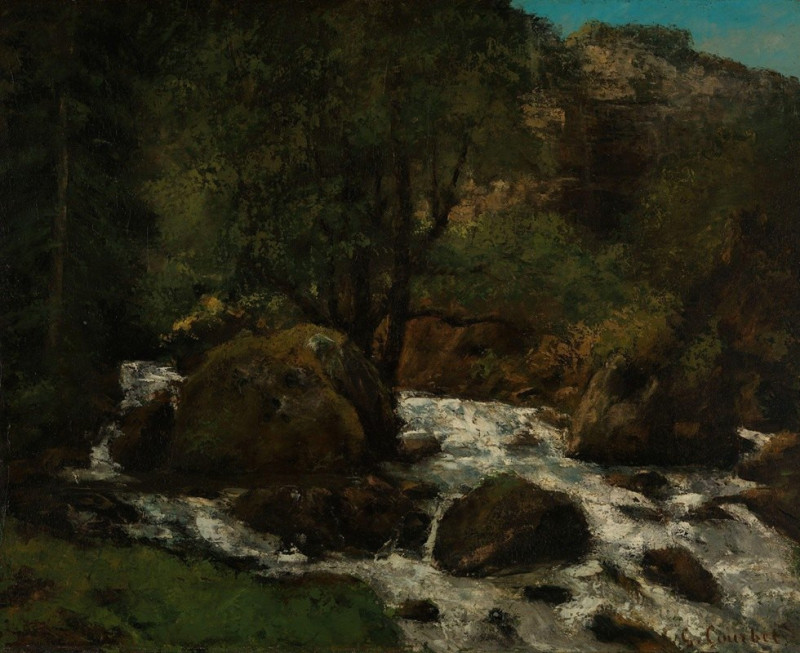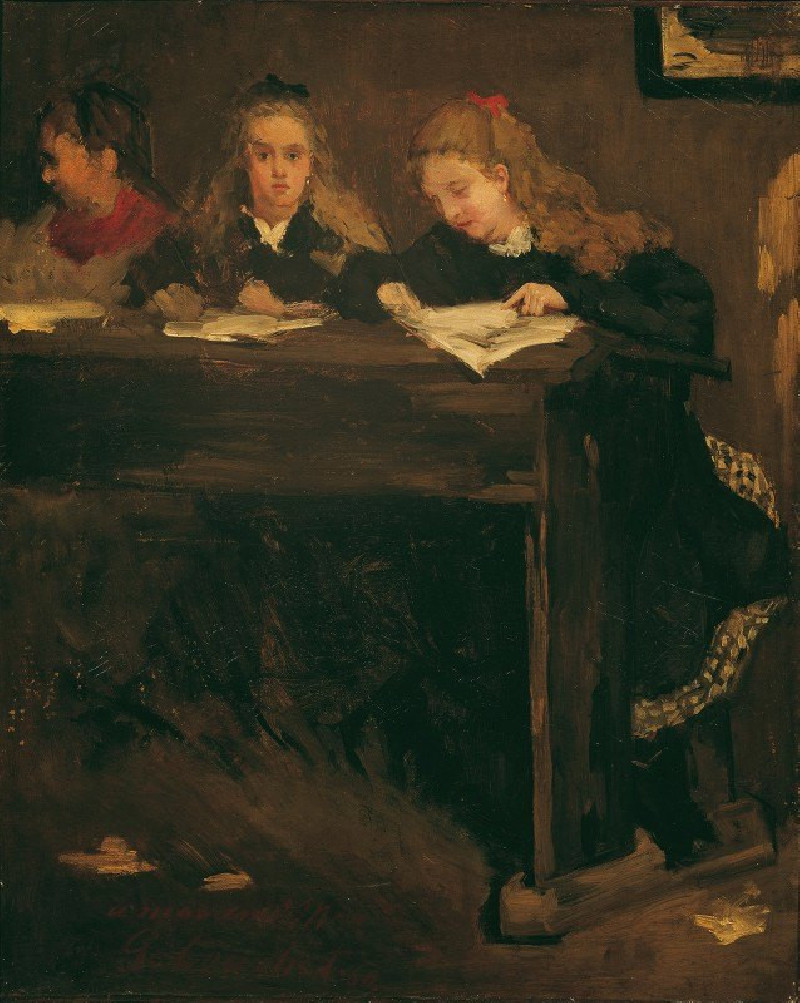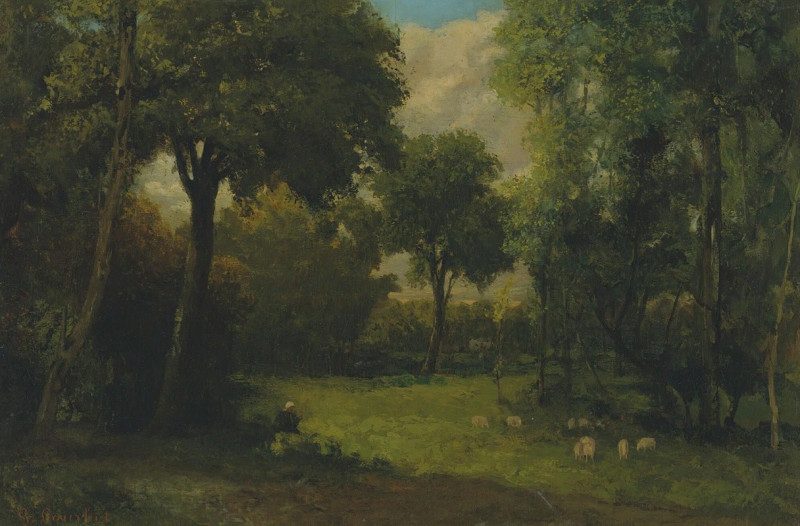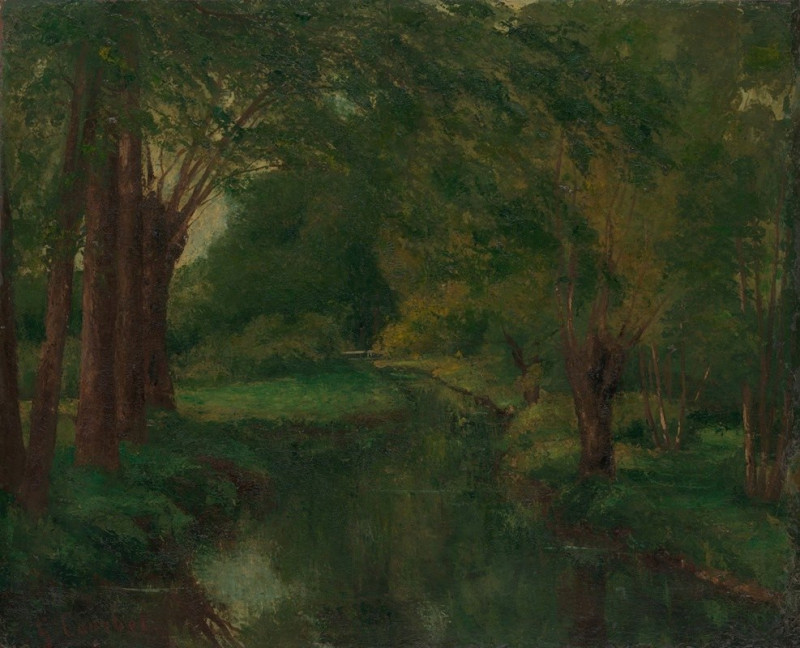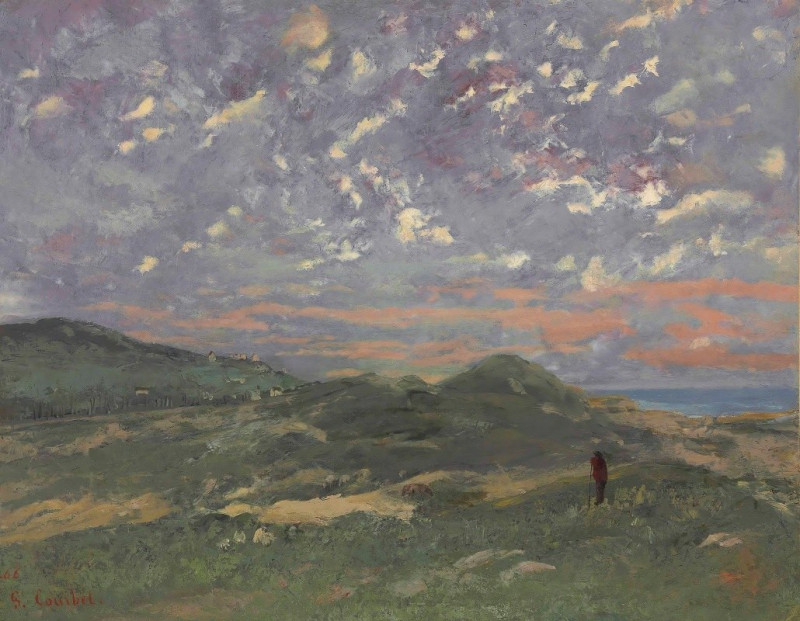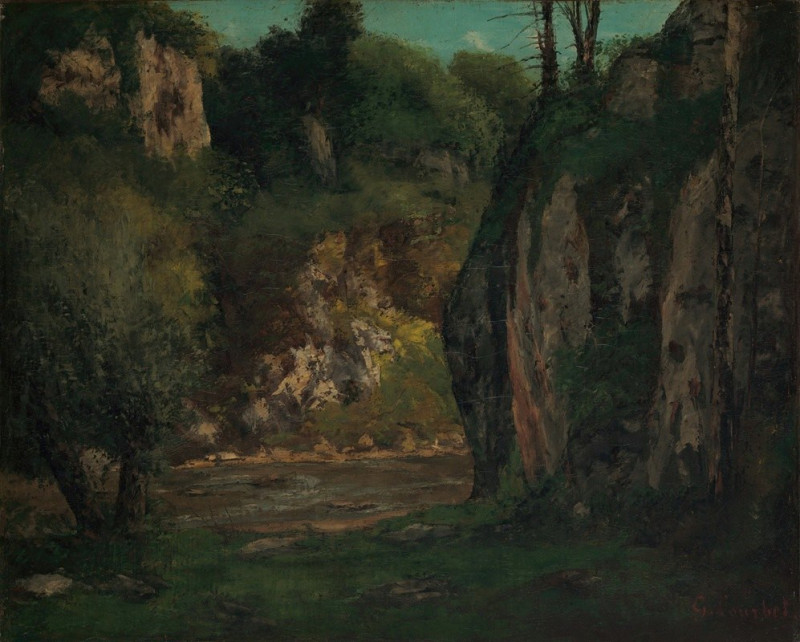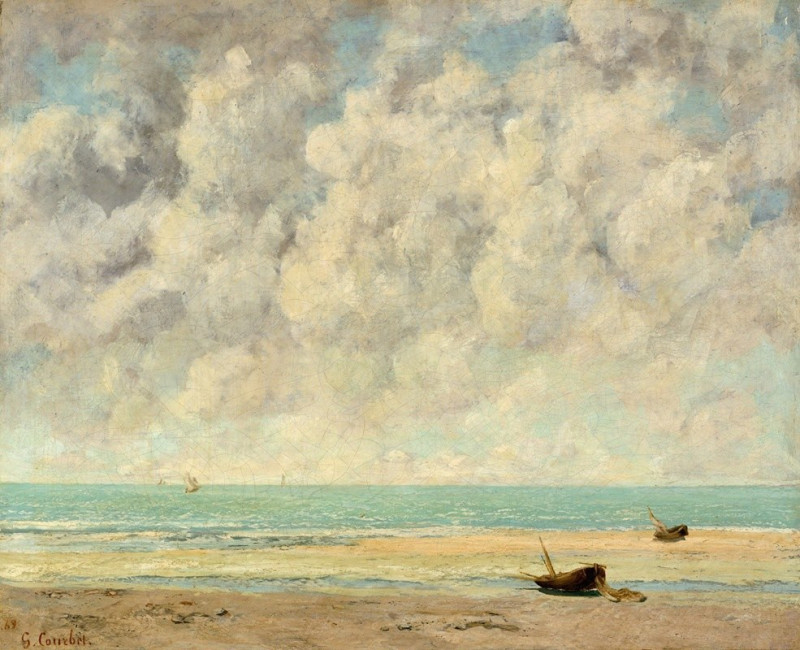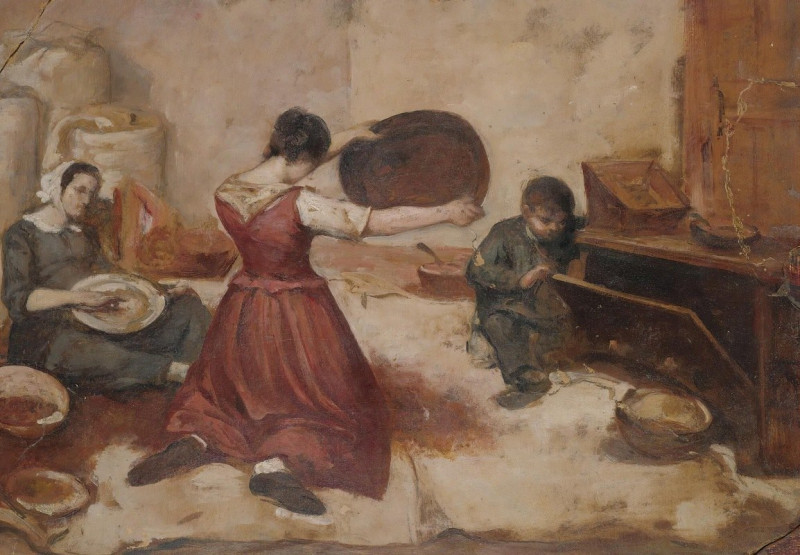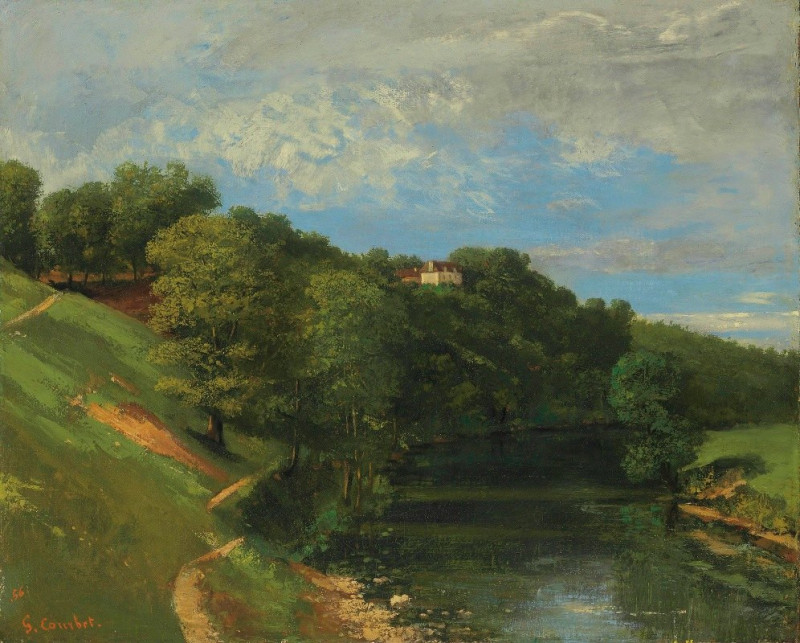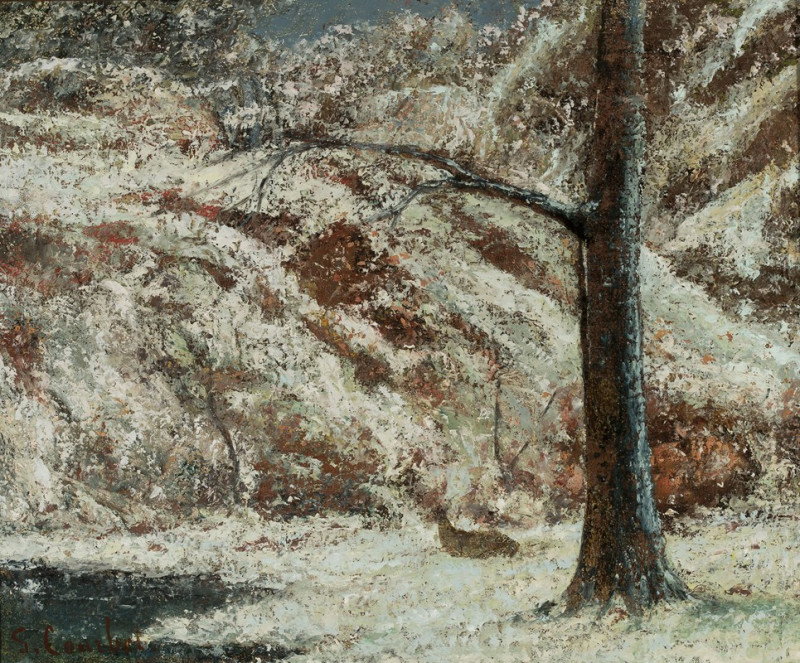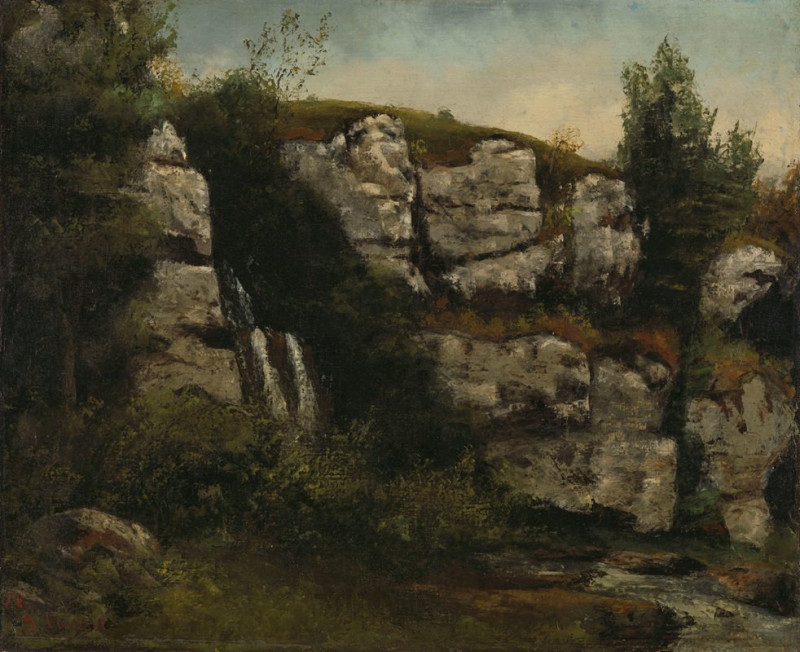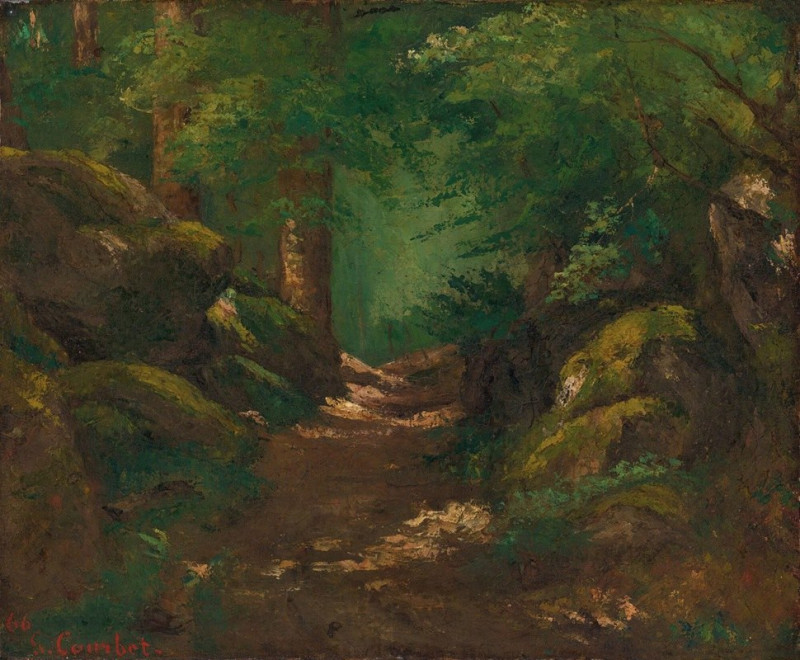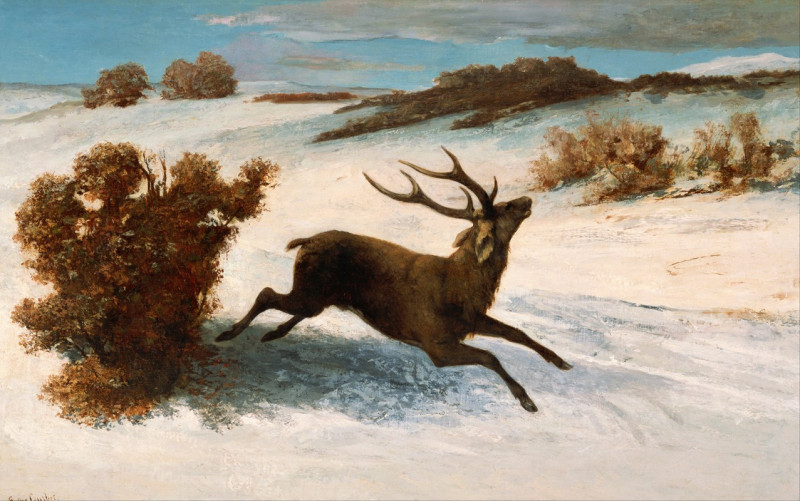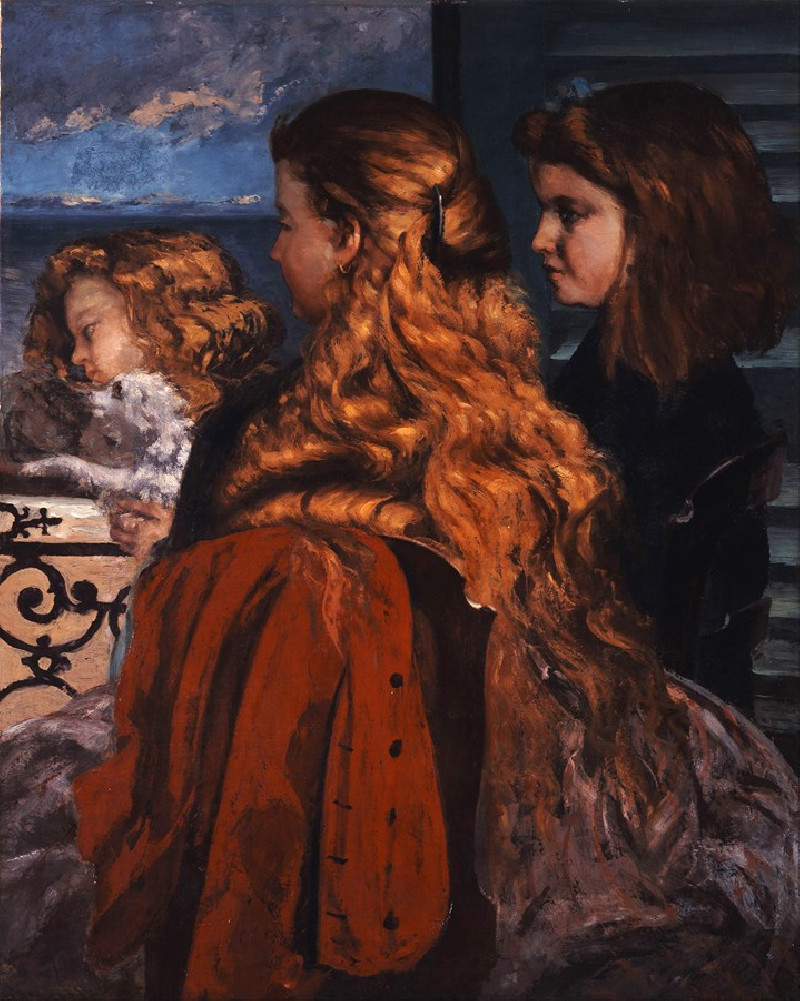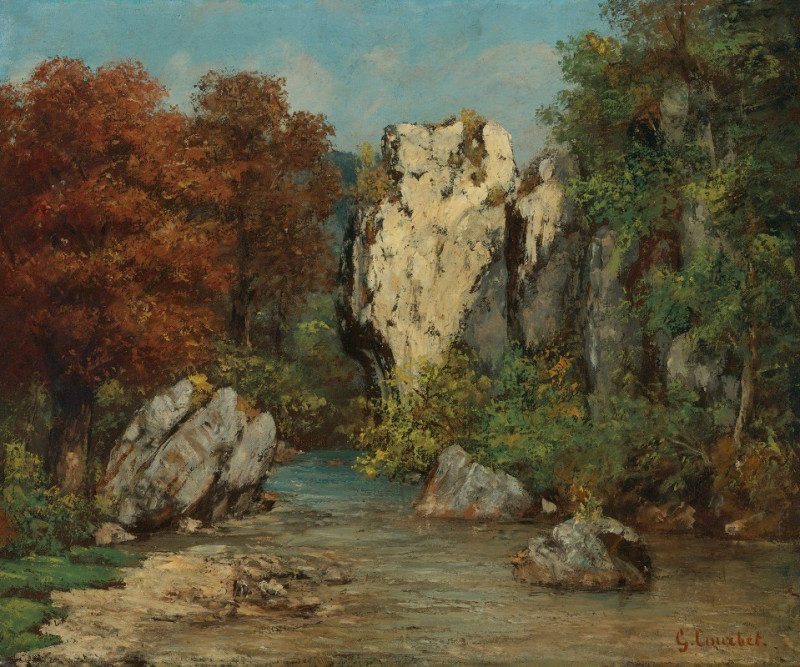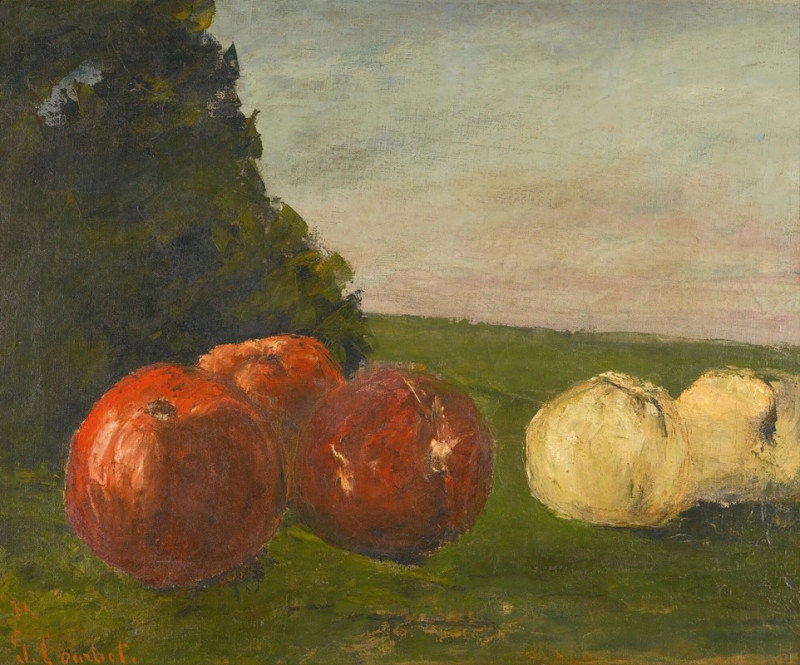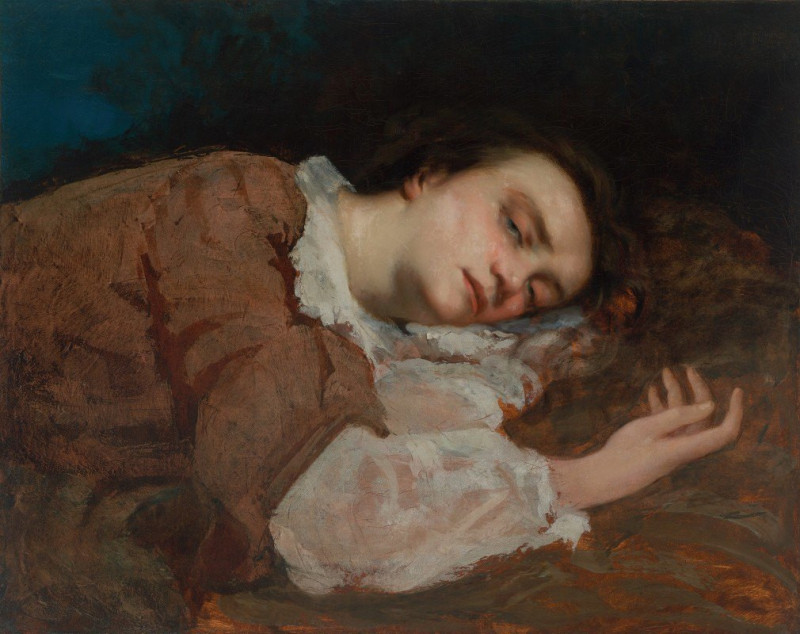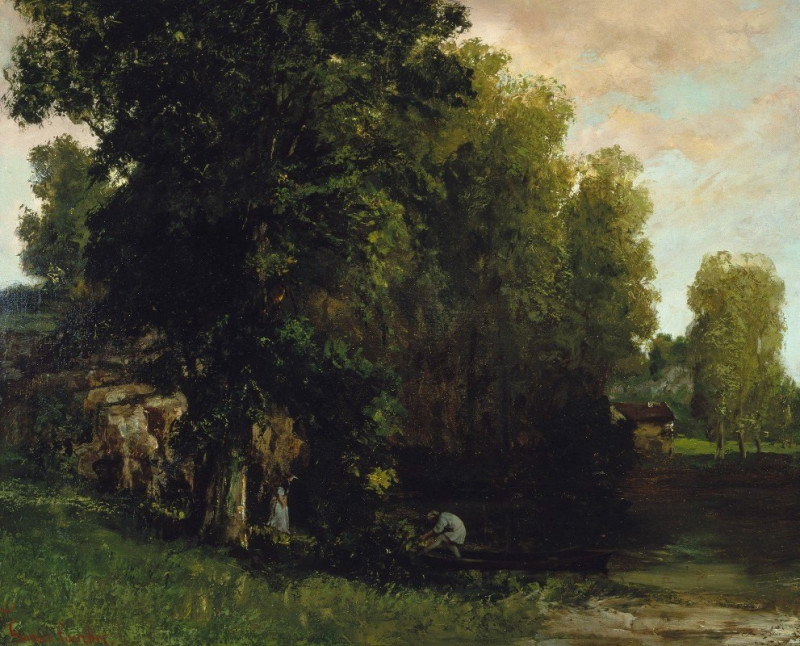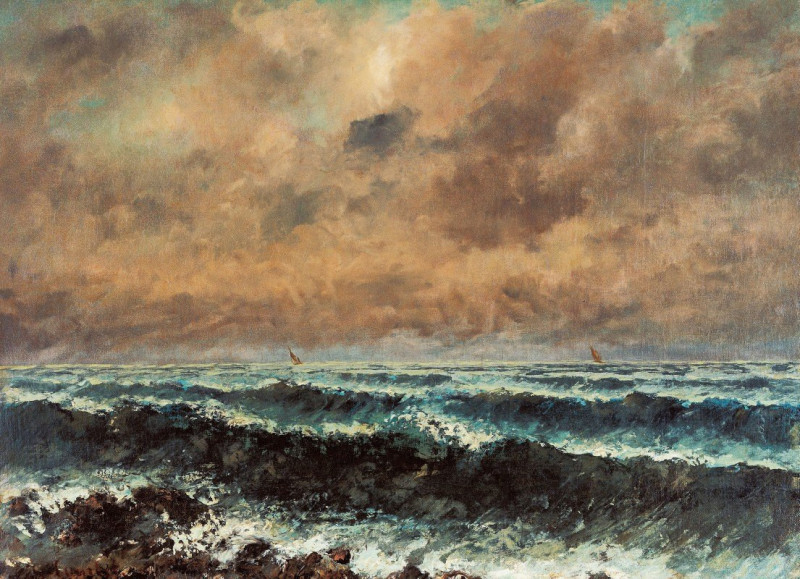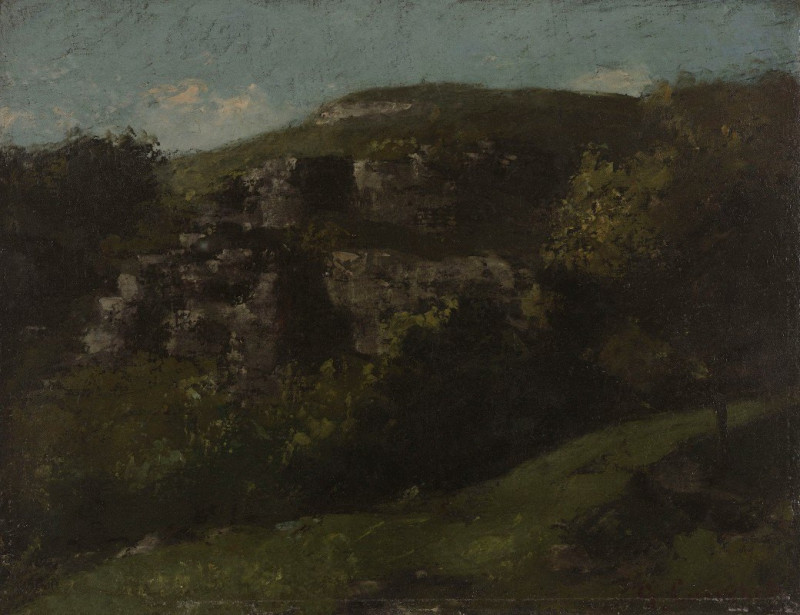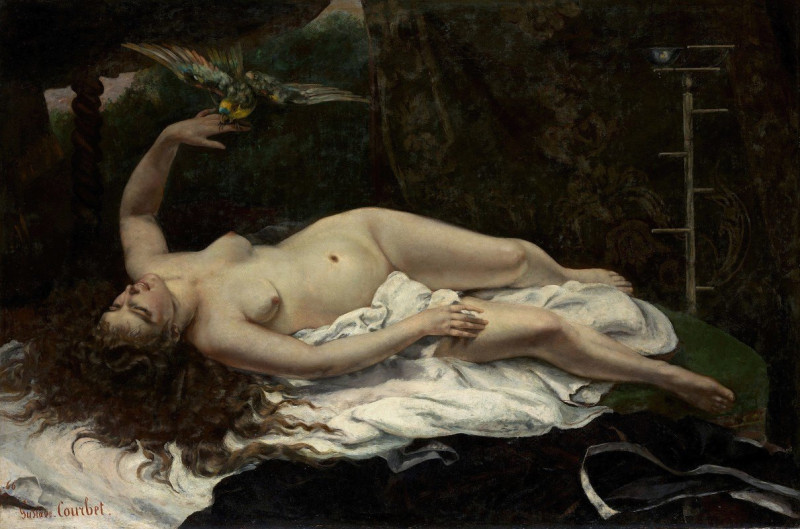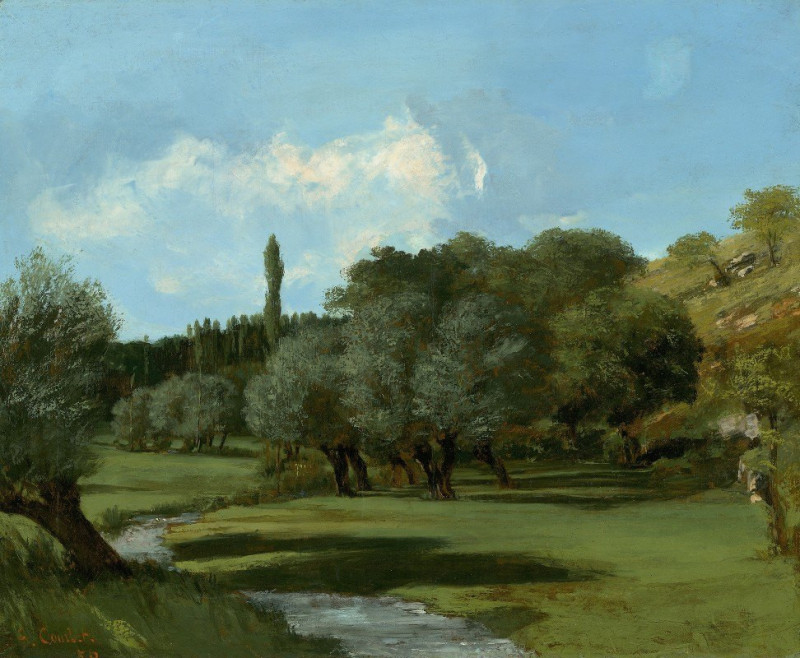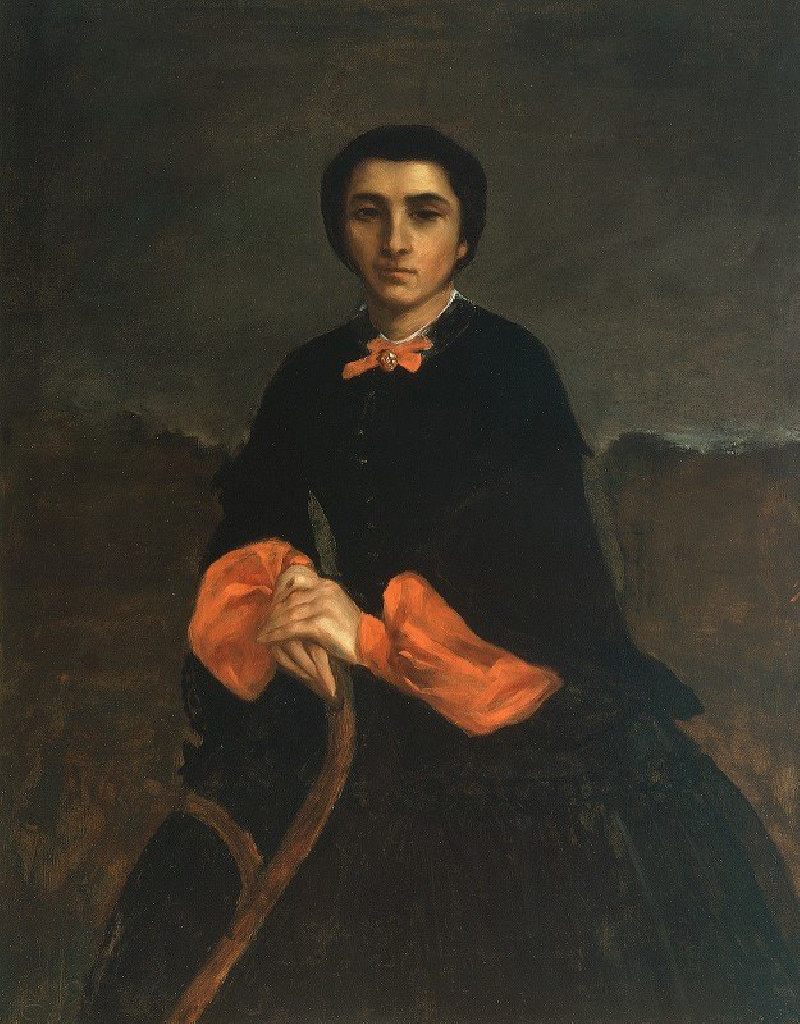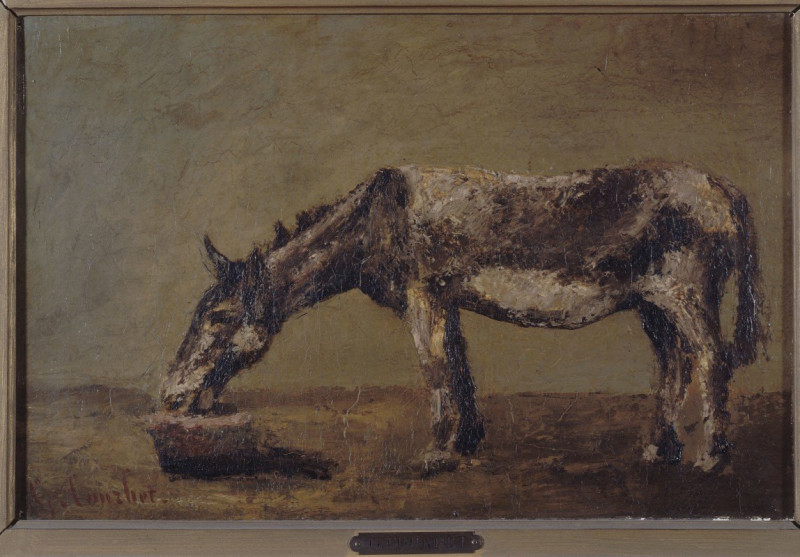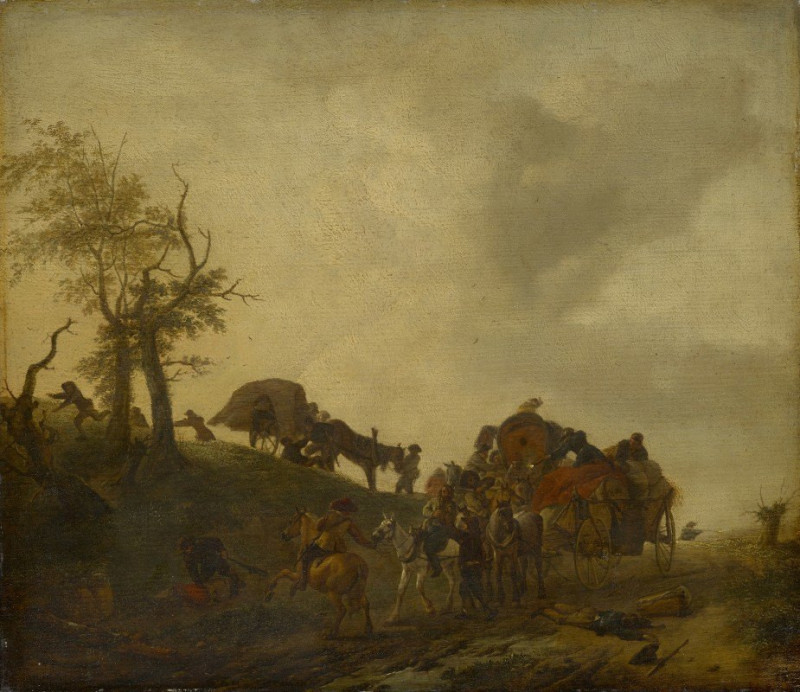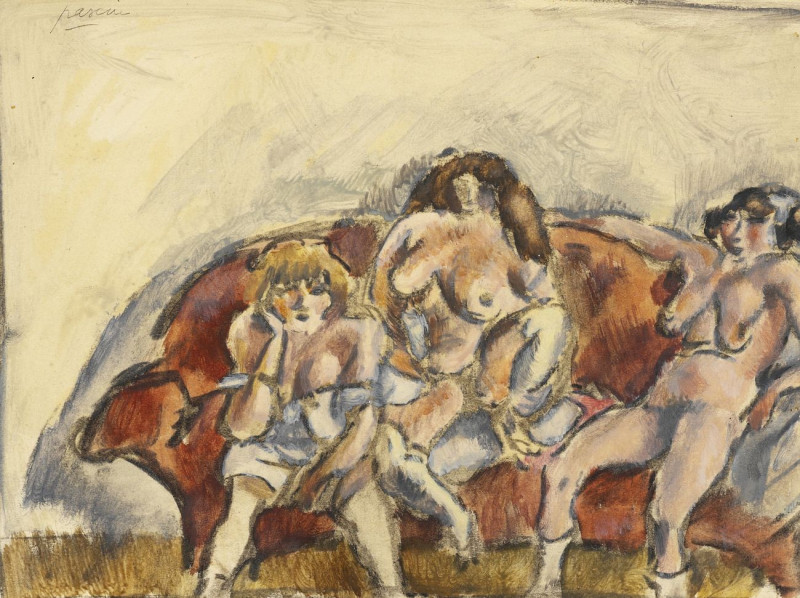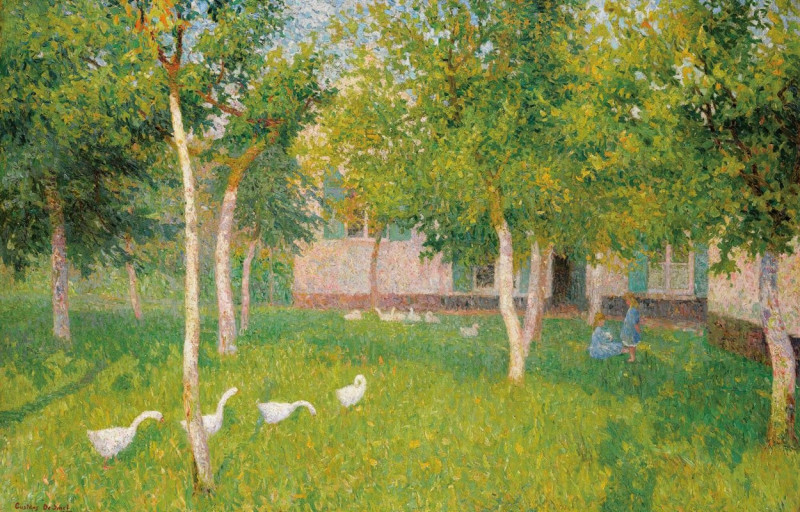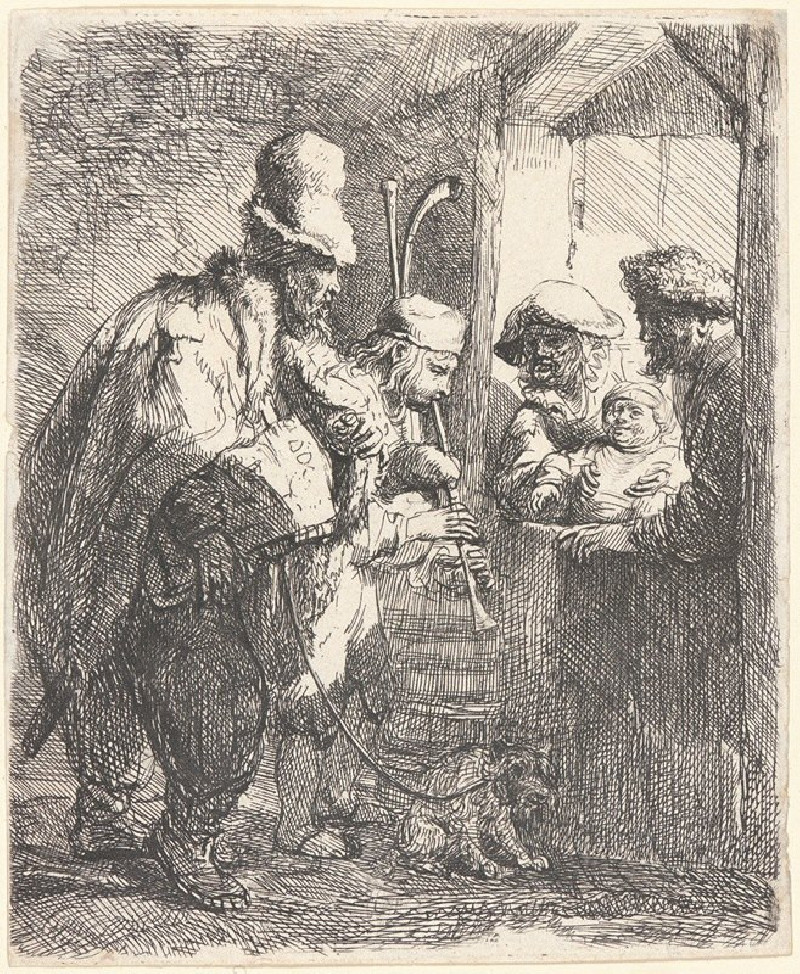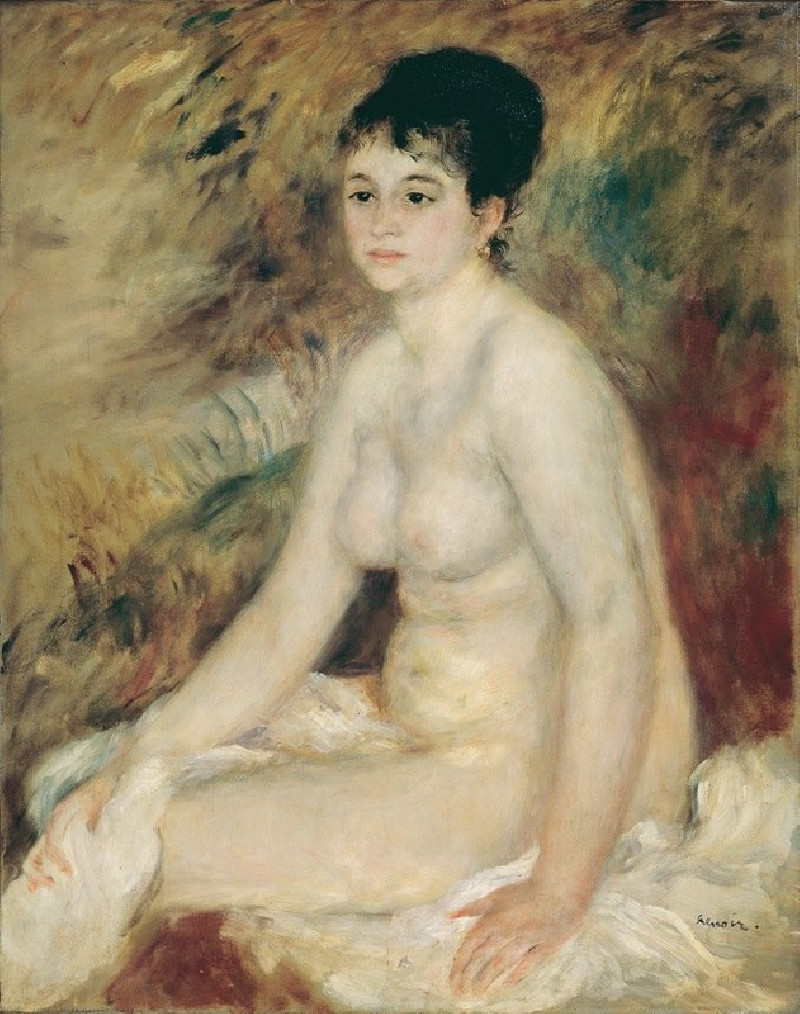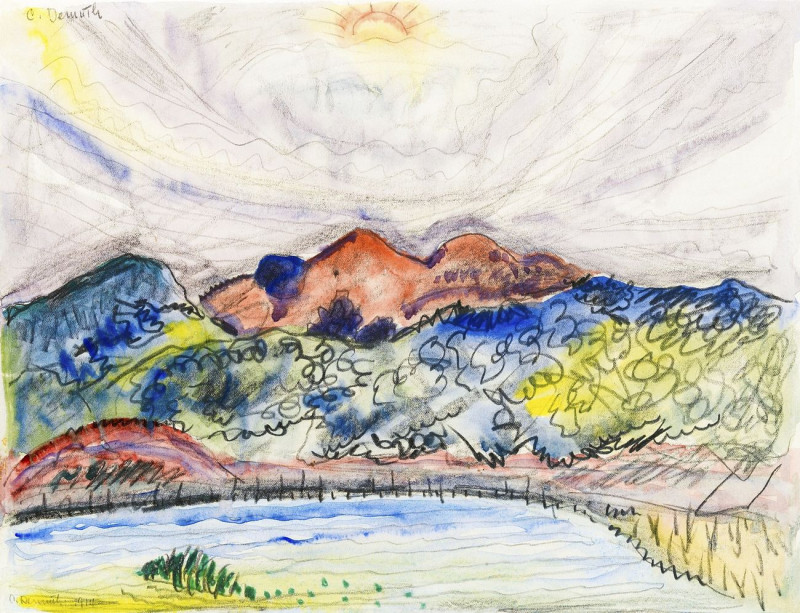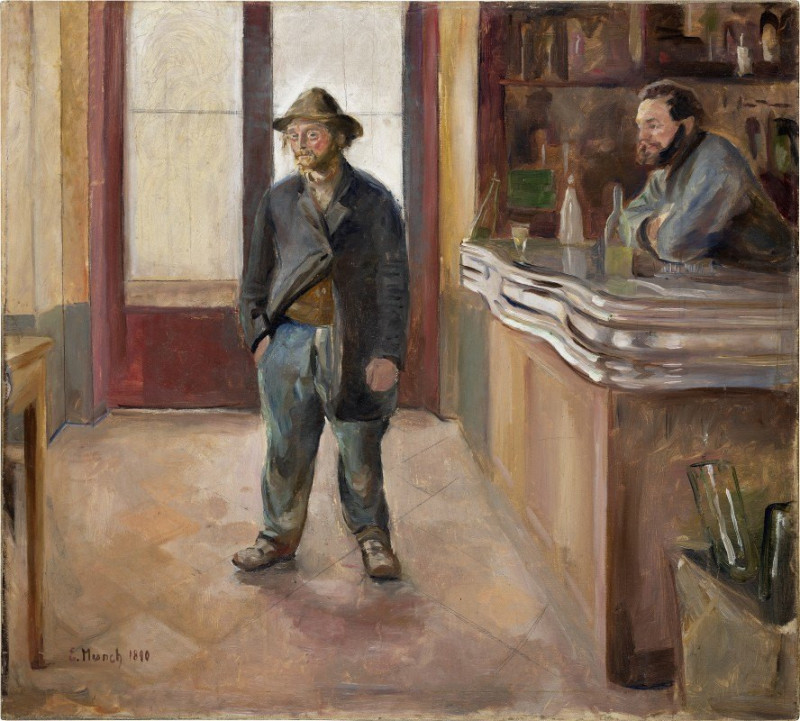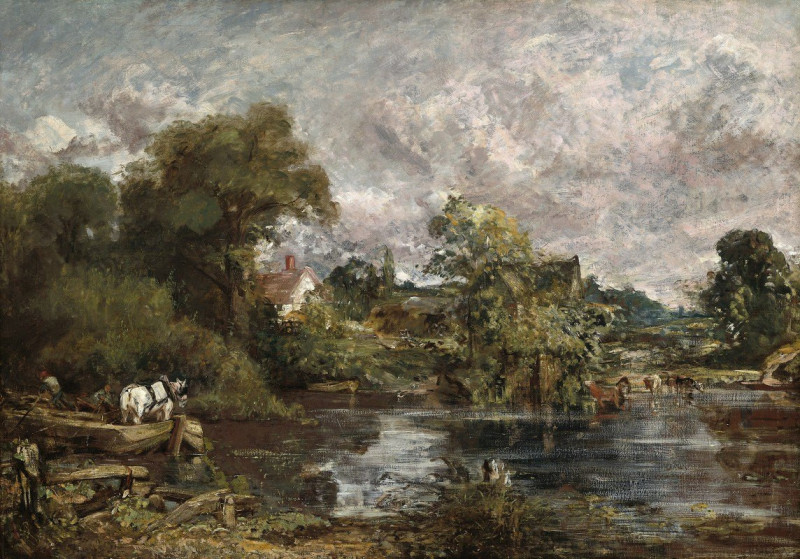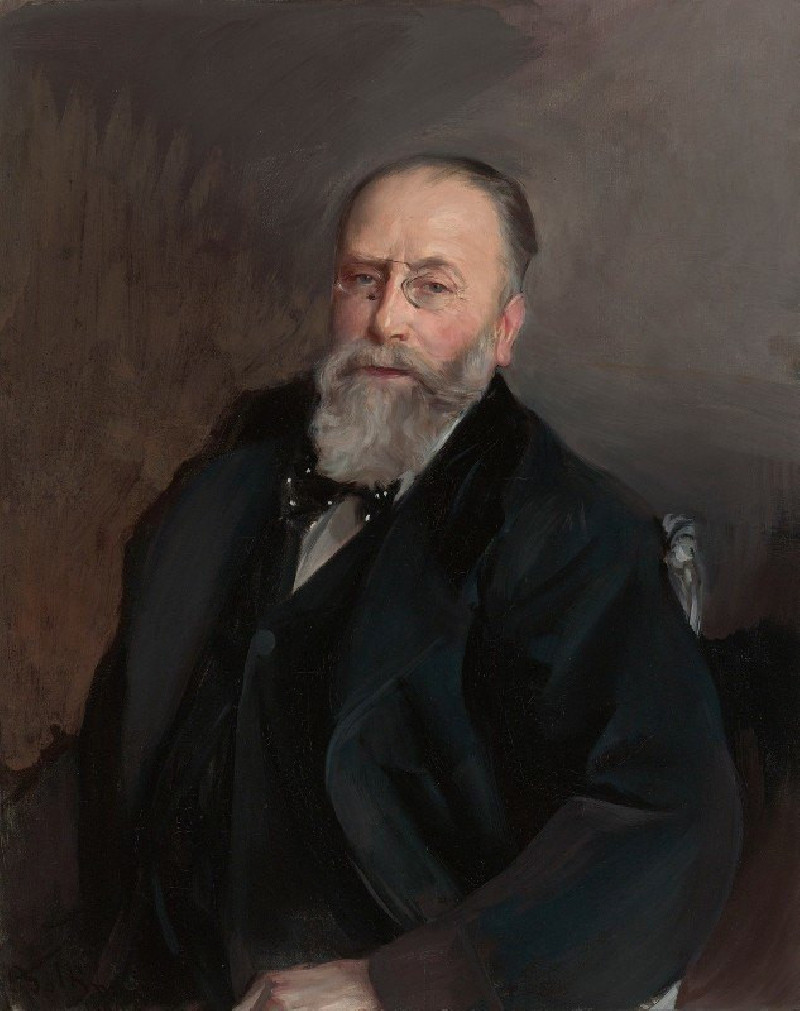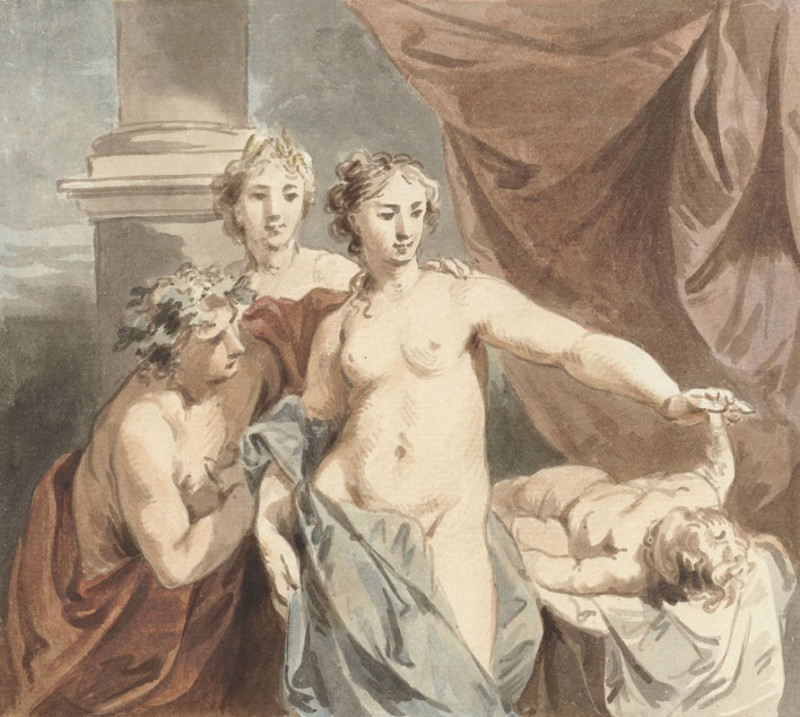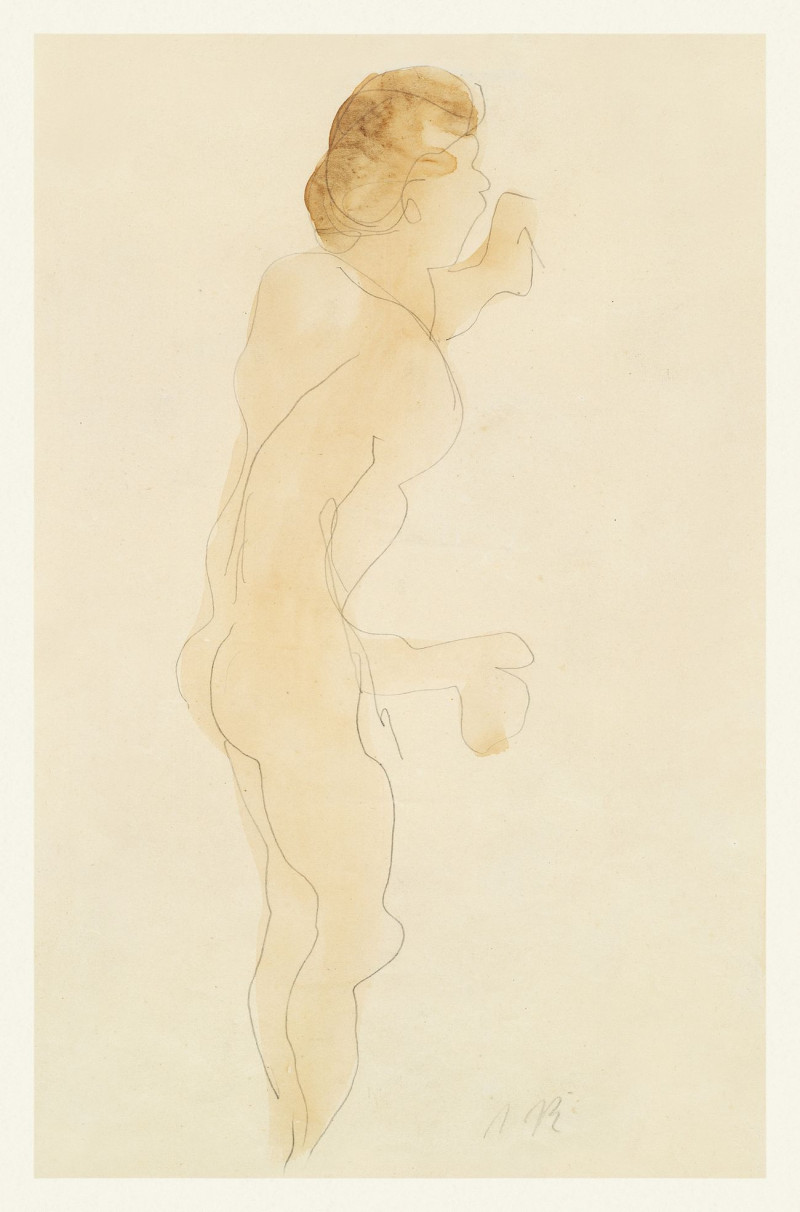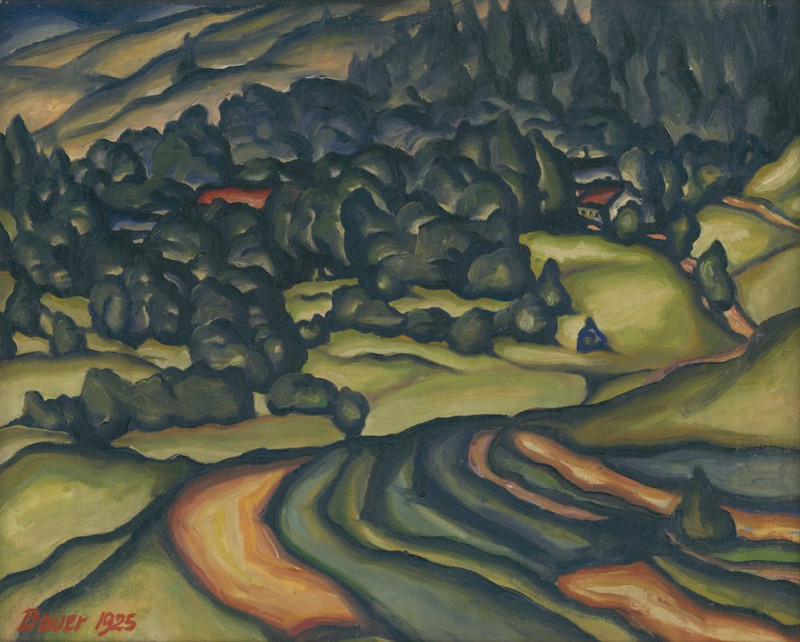Forest Brook, Jura (ca. 1860s)
Technique: Giclée quality print
Recommended by our customers
More about this artwork
Gustave Courbet's painting "Forest Brook, Jura" from the 1860s is a captivating example of his mastery in landscape art. This painting exudes the ethos of realism, a style Courbet was renowned for, capturing the raw and unembellished beauty of nature. In the foreground, a vibrant brook, whose textured waters spill over rocks, serves as the centerpiece, reflecting the light that breaks through the dense canopy of the forest. The rocks, speckled with moss, appear solid and damp, introducing a tactile element to the scene.The background, composed of lush, dark green foliage and towering cliff faces, provides a sense of depth and seclusion, enveloping the viewer in a serene, wooded embrace. Courbet’s use of thick brushstrokes and rich, earthy tones enhances the organic feel of the landscape, inviting the observer to not only view but feel the textures of the natural setting."Forest Brook, Jura" is more than just a visual experience; it is an invitation into the tranquility of the wilderness, capturing the essence of the Jura region's rugged yet picturesque landscape.
Delivery
Returns
Jean Désiré Gustave Courbet (10 June 1819 – 31 December 1877) was a French painter who led the Realism movement in 19th-century French painting. Committed to painting only what he could see, he rejected academic convention and the Romanticism of the previous generation of visual artists. His independence set an example that was important to later artists, such as the Impressionists and the Cubists. Courbet occupies an important place in 19th-century French painting as an innovator and as an artist willing to make bold social statements through his work.

